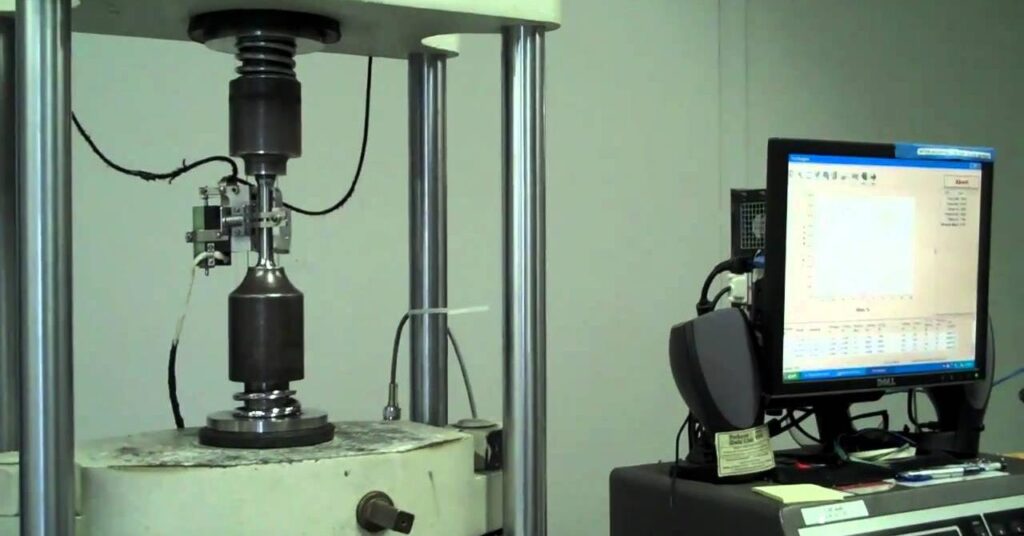Many industries use metals, their alloys, and plastics for tensile testing. People mostly use these materials in their homes, on the streets, in their offices, etc. However, how do these materials behave in extreme environments?
The answer is straightforward: these materials aren’t designed to withstand extreme conditions, so they won’t last. In situations involving safety, this is especially important to keep in mind. For tools, machines, and other devices, extreme conditions are often equated with temperature challenges. For example, who wants their equipment to fail in cold or excessively hot weather? Due to this, special materials have been developed and tested using tensile testing, to assess their performance under extreme conditions.
This topic will be discussed in our article. The following is a discussion of a variety of high-performance materials, focusing on their properties and reasons for tensile testing under extreme conditions.
High-Performance Material Types and Their Properties
Let’s explore the high-performance materials used for tensile testing under extreme conditions. Here are a few examples of materials that fall into this category:
- Carbon Fiber Composites
- High-Temperature Alloys (Superalloys)
- Titanium Alloys
- Nickel-Based Alloys
These materials have unique properties that make them suitable for high-stress environments. Taking a closer look at each of them:
Carbon Fiber Composites
Using carbon atoms in a crystal alignment, carbon fiber composites combine the strength of carbon fibers with various resins. 5-10 micrometers in diameter, these fibers are incredibly thin. Because of its structural alignment, composite materials have a high strength-to-weight ratio, outperforming traditional materials like steel and aluminum.
Carbon fiber composites are remarkably rigid, which enhances their stiffness under stress. Rigidity is measured by Young’s Modulus, which measures how much a material deflects under stress. Carbon fiber-reinforced plastic is over 4 times stronger than glass-reinforced plastic and 2.5 times stronger than aluminum.
Additionally, these composites have excellent thermal properties. They efficiently transfer heat due to their thermal conductivity, and their low coefficient of heat expansion (the measure of how much a material expands and contracts with temperature changes) adds to their thermal stability.
Despite their corrosion resistance and chemical stability, carbon fiber composites need protection from UV radiation due to the resin’s sensitivity. Their electrical conductivity, an exceptional feature, requires careful consideration to avoid galvanic corrosion in specific applications.
High-Temperature Alloys
Often called superalloys, high-temperature alloys are specialized materials that remain strong and resistant to corrosion and oxidation even at very high temperatures, typically above 600°C. They are primarily composed of iron, nickel, and cobalt. Nickel-based alloys are the most widely used, followed by iron-based alloys, nickel-based alloys, and cobalt-based alloys.
These alloys are strengthened through solid solution strengthening and precipitation strengthening. By adding chromium, tungsten, and molybdenum to the base metal lattice, solid solution strengthening enhances its strength. The process of precipitation strengthening involves aging the solid solution, resulting in the formation of a second phase, which contributes to significant strength.
In nickel-based superalloys, for example, nickel is balanced with chromium, molybdenum, titanium, niobium, aluminum, and iron. In applications where materials are exposed to extreme thermal environments, these components contribute to the alloy’s high-temperature resistance. In alloys such as GH4169 (similar to Inconel718), the presence of niobium is directly linked to the alloy’s high-temperature performance, with several times the yield strength and tensile strength of standard steels like 45.
Titanium Alloys
Titanium alloys are renowned for their combination of high strength, lightweight, and corrosion resistance. The alloys are made by blending titanium with other metals, such as aluminum, copper, or iron. Among the most prominent industries where these properties are advantageous are aerospace, automotive engineering, and medical implants.
Ti-6Al-4V is one of the most notable titanium alloys. It consists of 6% aluminum, 4% vanadium, and the remaining titanium. The strength-to-weight ratio of this alloy is particularly impressive. While maintaining similar stiffness and thermal properties, it is significantly stronger than commercially pure titanium. Airframes and engine parts are commonly made from it due to its ability to withstand temperatures up to 400 degrees Celsius and its low density of approximately 4420 kg/m3. Because of its biocompatibility, it is also used in the medical field for implants and prostheses.
Nickel-Based Alloys
Among advanced materials, nickel-based alloys stand out for their impressive combination of properties. Nickel usually makes up more than half of these alloys, and they are often combined with other elements such as chromium, molybdenum, and iron. The result of this unique blend is a material that has both high strength and exceptional corrosion resistance, making it ideal for environments that are both physically and chemically demanding.
Nickel-based alloys are characterized by their ability to withstand extremely high temperatures. The melting points of these alloys range from 1,455 to 2,651 degrees Celsius. They remain strong and structurally intact even in extreme temperatures. A feature like this is essential when materials are exposed to extreme temperatures for a prolonged time.
Nickel-based alloys are also corrosion-resistant. Therefore, they are especially suitable for use in conditions where they are exposed to corrosive elements, ensuring long-term durability and reliability. Furthermore, some nickel alloys exhibit magnetic properties, which makes them useful in areas requiring magnetic responsiveness.
Advanced Tensile Testing for Extreme Conditions
For applications requiring extreme conditions, tensile testing is extensively common for materials like carbon fiber composites, high-temperature alloys, titanium alloys, and nickel-based alloys. These tests ensure that these materials can withstand various challenges, such as temperature extremes, and remain functional. Tensile testing procedure, for instance, can verify that a fuel pipe in a spacecraft won’t fail at the most critical moment, which could result in catastrophic failure.
Tensile specimens, typically round or flat (dog-bone shapes), have become increasingly popular in recent years, followed by testing with advanced CNC machines. A thorough preparation and testing process are vital for validating these materials’ endurance and performance.
Thus, tensile testing for high-performance materials guarantees that devices, components, and tools will perform effectively, durably, and efficiently, regardless of the harshest environment. Safety and reliability are crucial in critical applications, and this testing is not just a procedural step.






